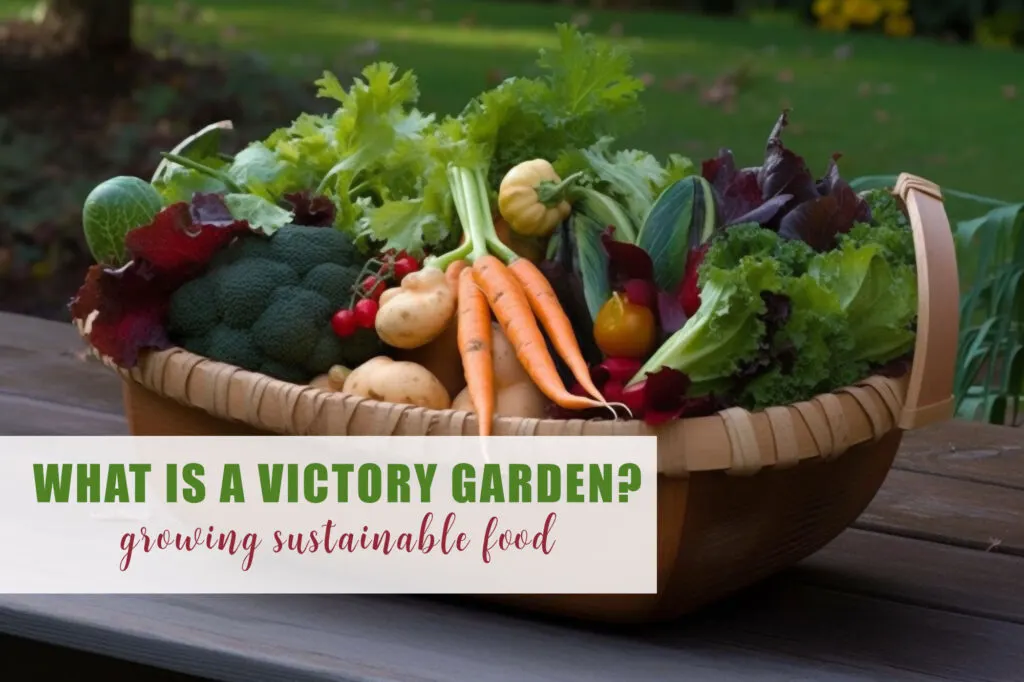While American soldiers fought around the globe during World War I, citizens at home faced rationing and food shortages. The government urged people to grow their own food to supplement rations and to free up farm-grown produce for soldiers overseas.
Americans nationwide responded to the call by filling their yards with edibles. These gardens came to be known as Victory Gardens, or war gardens, and were seen as the ultimate act of patriotism by those on the home front.
A victory garden was a vegetable, fruit, and herb garden planted during World War I and II by civilians to supplement their food supply and support the war effort. Victory gardens were encouraged by governments to reduce the pressure on the public food supply and allow farmers to focus on providing food for soldiers. These gardens were typically planted in backyards, vacant lots, and public parks and produced a significant amount of fresh produce. Victory gardens also helped boost morale and patriotism among the civilian population, as people felt that they were contributing to the war effort in a meaningful way.
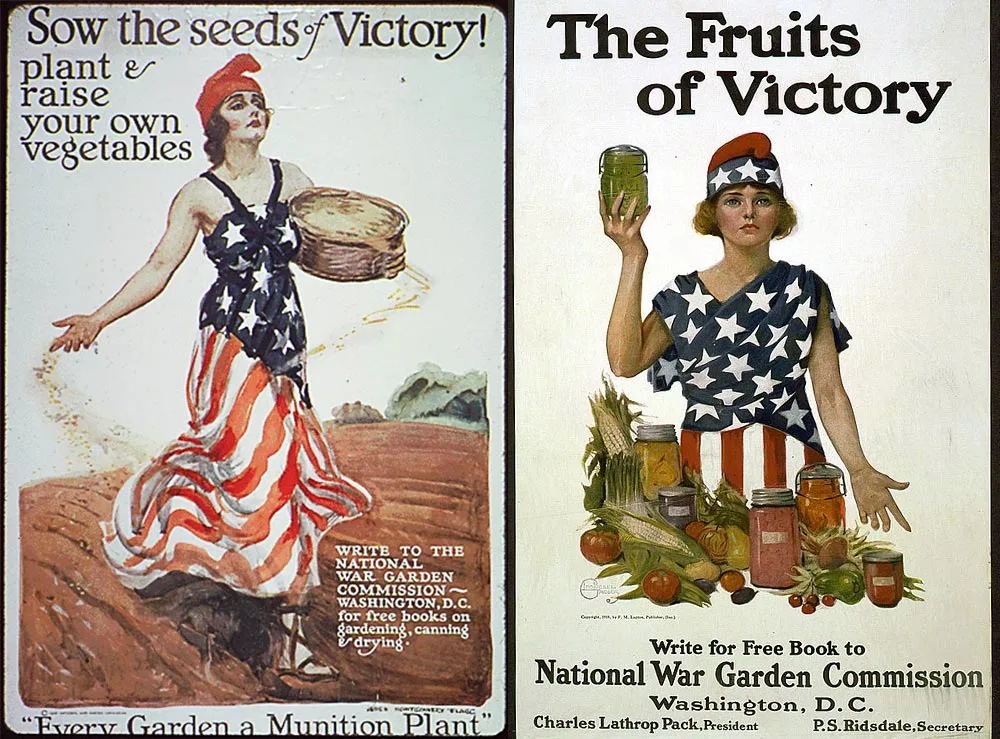
The Rise of Victory Gardens
The U.S. Department of Agriculture distributed thousands of pamphlets, posters, and advertisements promoting Victory Gardens starting around 1918. A pamphlet from 1919 proclaimed, “War gardening will permanently establish itself as Victory gardening because its peace-time value will fully equal its war-time worth.”
In addition to the propaganda promoting gardening, the government printed recipe books teaching gardeners how to prepare meals with their homegrown produce. Some pamphlets included tips on what types of crops to grow in various environments and plant-specific information to ensure growing success.
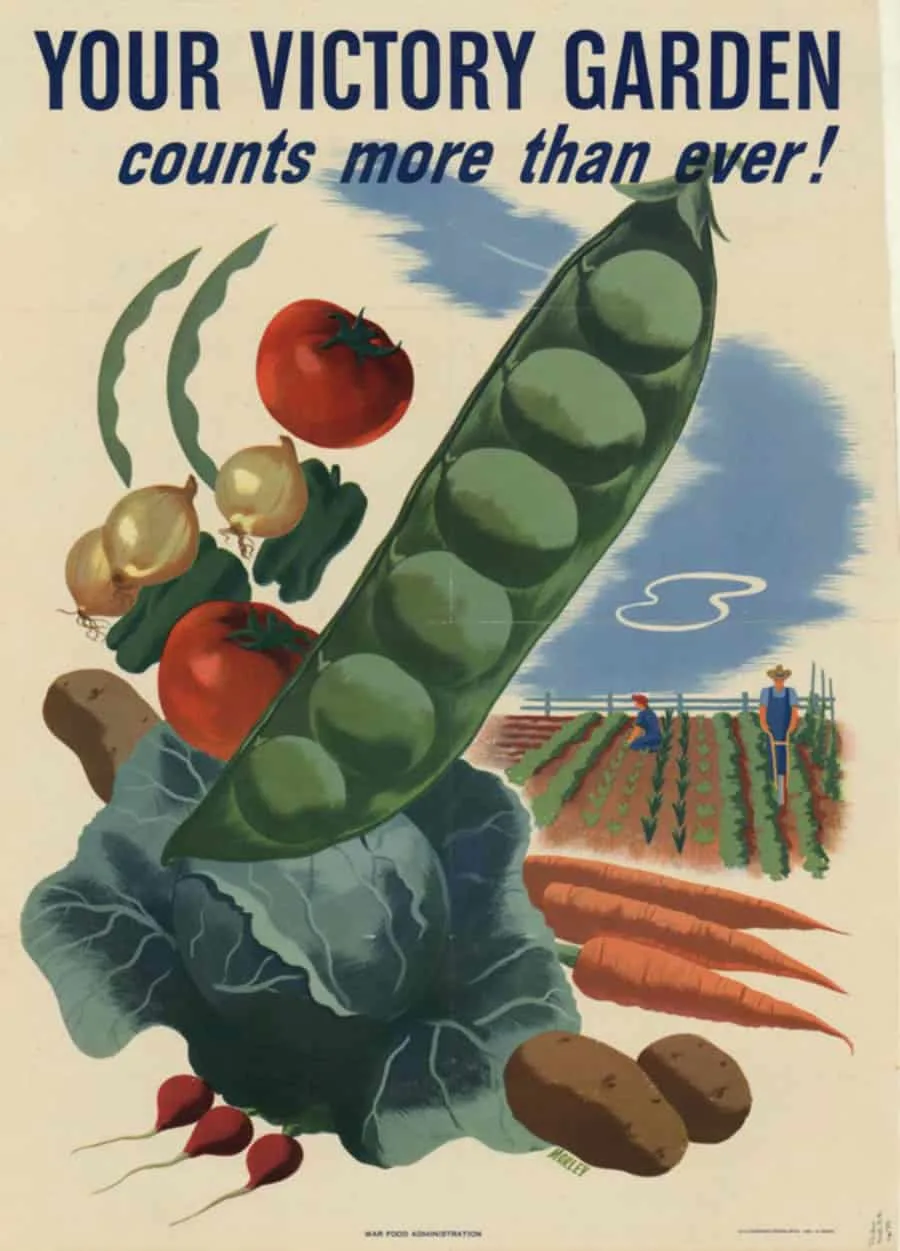
The tracts of vacant land in every city, town and village should be used for growing vegetables. To cultivate these and make them add their contribution to the national food supply is a duty that no community can afford to overlook. People who have no vacant land of their own should be encouraged to grow gardens for their own protection from the high cost of living and to help the general situation. Landowners should be glad to contribute the use of their property for this patriotic purpose. Community organization should bring gardener and land together. –
“Victory Gardens Feed the Hungry” by Charles Lathrop Pack, 1919
Victory Gardens made a big comeback during the second world war, and by 1944 home gardeners produced 40 percent of vegetables grown in the United States in over 20 million vegetable gardens. 20 million! That equated to about 80 billion pounds of food!
During World War I and II, victory gardens were grown not only on private lands like backyards and rooftops, but also in public spaces such as parks and schoolyards. Municipal governments often supported the establishment of victory gardens on public lands to promote community involvement in the war effort and increase access to fresh produce.
People without yards learned to grow food in containers, window boxes, and on roofs, while schools across the country used gardens to teach children about food production, and even used the produce in school lunches.
These public victory gardens thus served not only as a source of food but also as an educational space where people could learn about the importance of self-sufficiency and sustainable agriculture practices.
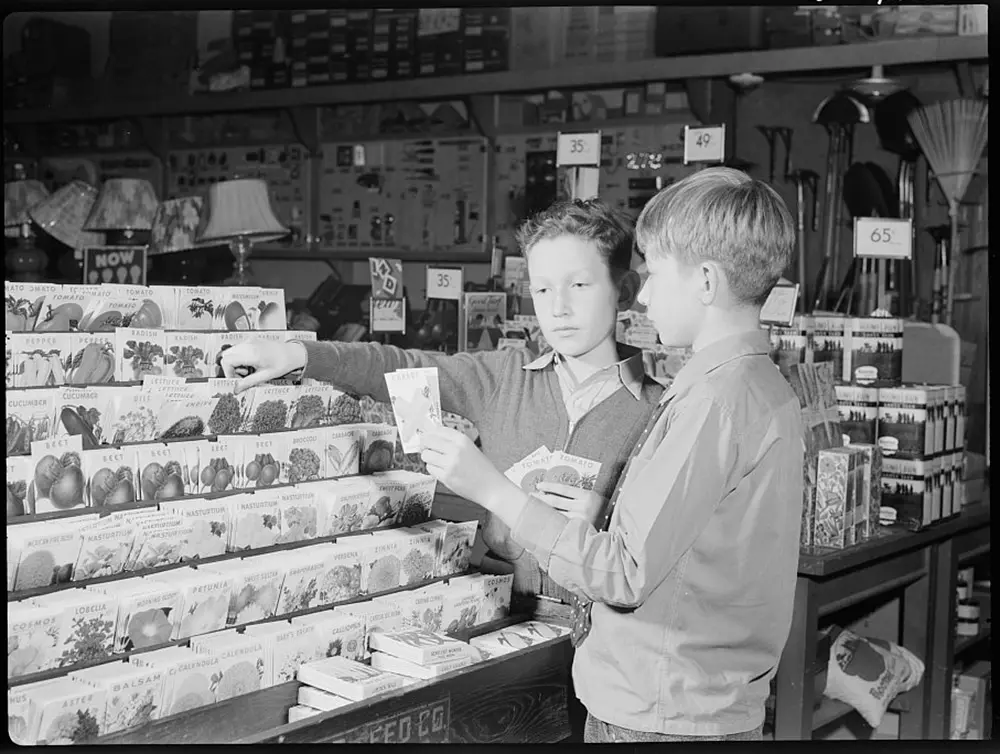
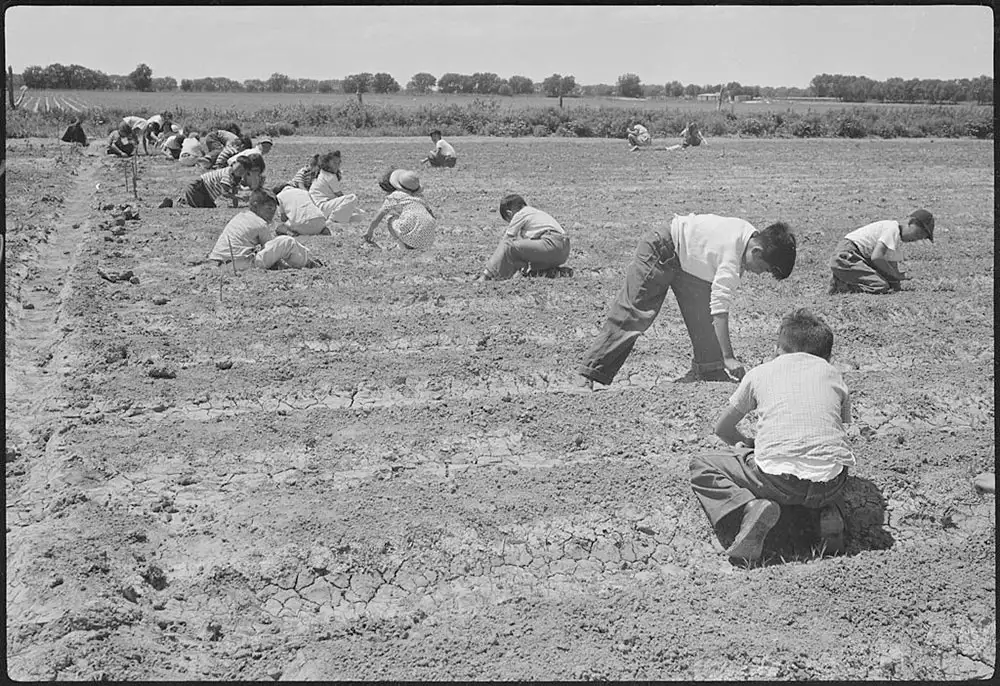
Encouraging citizens to grow food gardens served not just to help with food shortages but as a nationwide morale booster. Gardening is proven to reduce stress, but it also gave people a sense of purpose in an otherwise uncertain time. By growing their food, Americans gained self-sufficiency while contributing to the war effort.
Eleanor Roosevelt played an important role in promoting victory gardens during World War II. As the First Lady of the United States, she frequently encouraged Americans to plant their own gardens to support the war effort and reduce the demand on the nation’s food supply.
Roosevelt herself planted a victory garden on the White House lawn and regularly wrote about the importance of gardening in her newspaper column and on her radio show. She also visited community gardens and gave speeches advocating for the benefits of victory gardens. Roosevelt’s efforts helped to popularize the concept of victory gardens and contributed to their widespread adoption across the United States.
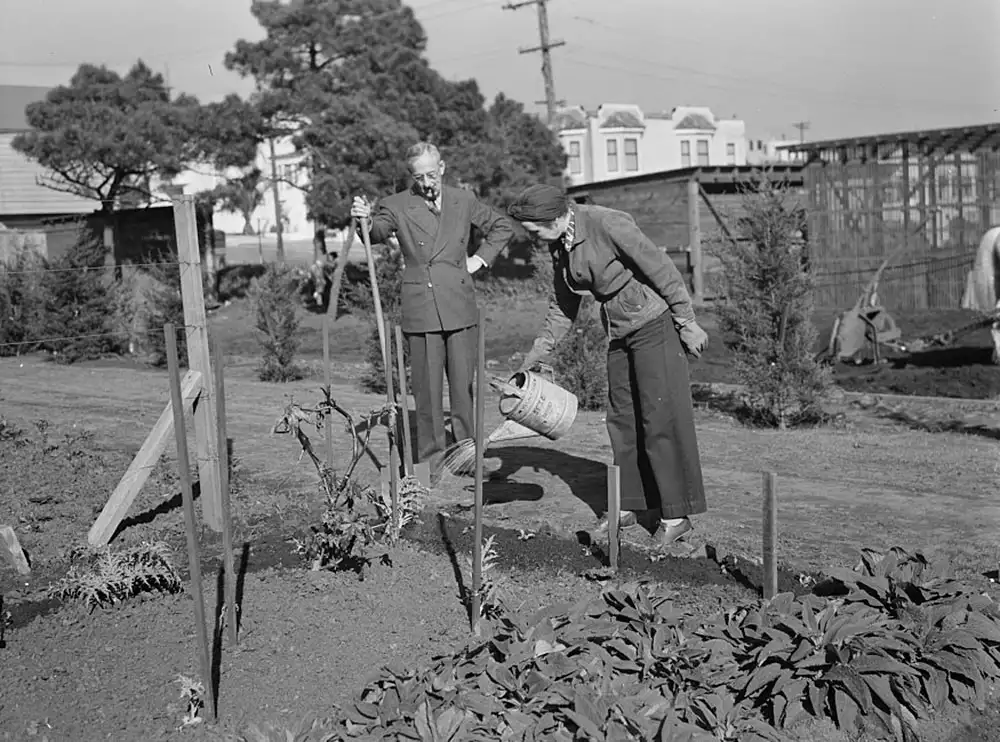
“Gardens flourished on the home front because people were eager to build their own community-based food security, and to cultivate something beautiful and useful in times of great stress and uncertainty” – Rose Hayden-Smith, author of “Sowing the Seeds of Victory: American Gardening Programs of World War I”
– via New York Times.
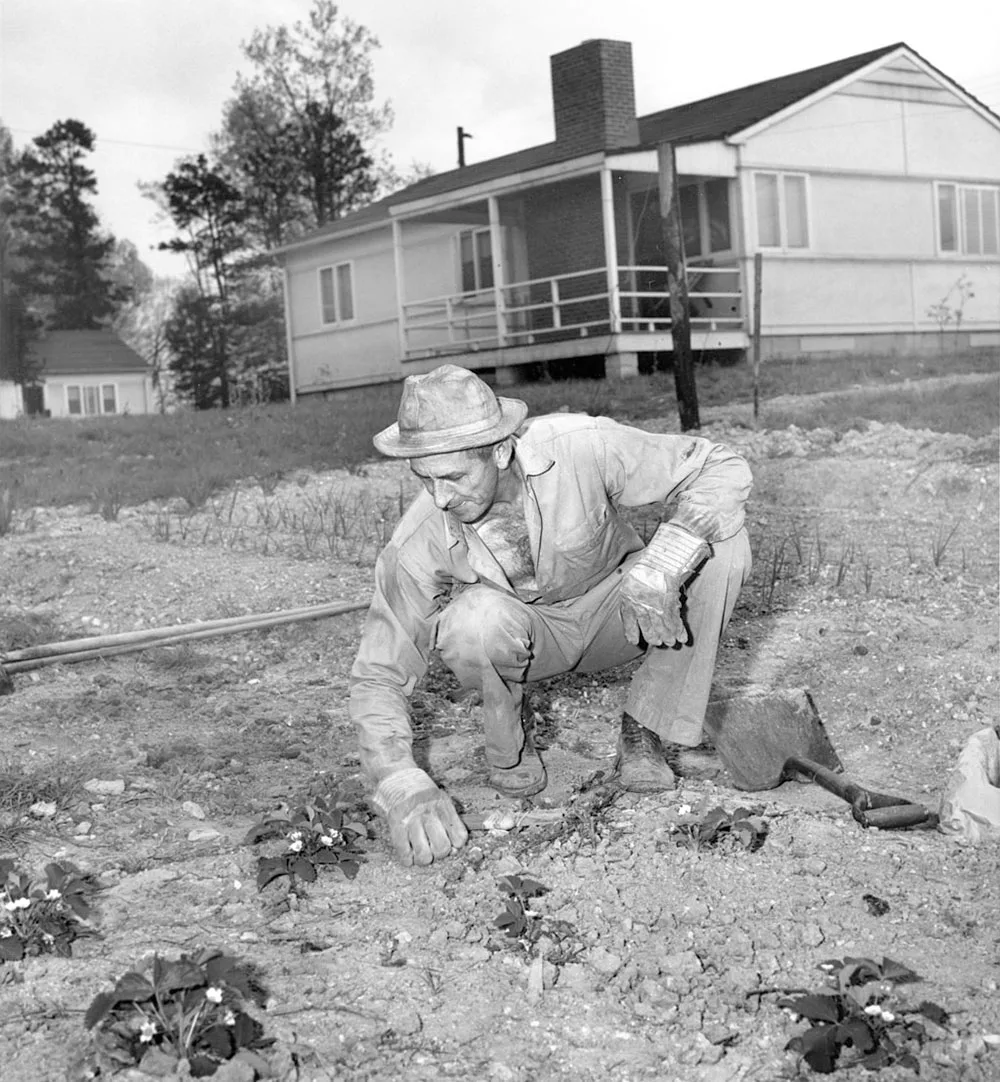
Modern Victory Gardens
I find it interesting that the government heavily promoted turning yards into mini-farms early in the 20th century, but now you can get fined by your city or HOA for doing so. Many cities and suburban communities condemn anything beyond a plush, green lawn. Still, I think everyone can grow their own “Victory Garden” of any size, wherever they reside, and reap incredible benefits emotionally, physically, and financially.
Growing food provides an invaluable sense of security in tumultuous times, whether it’s a war or a pandemic. None of us could have predicted that we’d experience a global pandemic, nor the impact it would have on all of us.
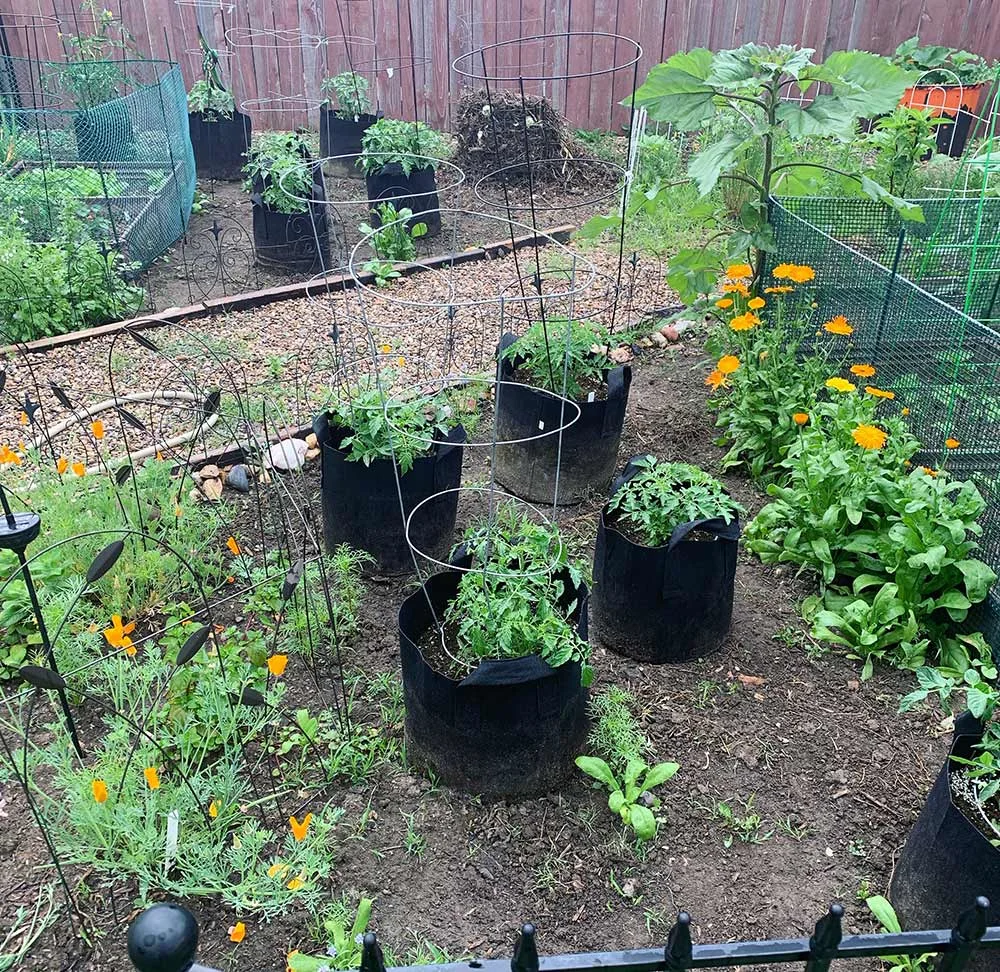
In recent years, many of us have witnessed empty grocery store shelves for the first time in our lives. We’ve also seen people panic over everyday essentials we usually take for granted. A few years ago, the idea of everyday essentials being in short supply would have seemed preposterous.
When times are good and food is plentiful, people grow gardens because they enjoy it. It’s a great way to get outdoors and create something beautiful, to feed a family, to offset grocery costs, and to gain some independence from the commercial food system.
When store shelves are bare, a home garden can provide families some or all of their produce needs. Vegetables, herbs, and fruits of many varieties can be grown by almost anyone, whether they’re growing on a rural acreage or an inner-city apartment balcony.
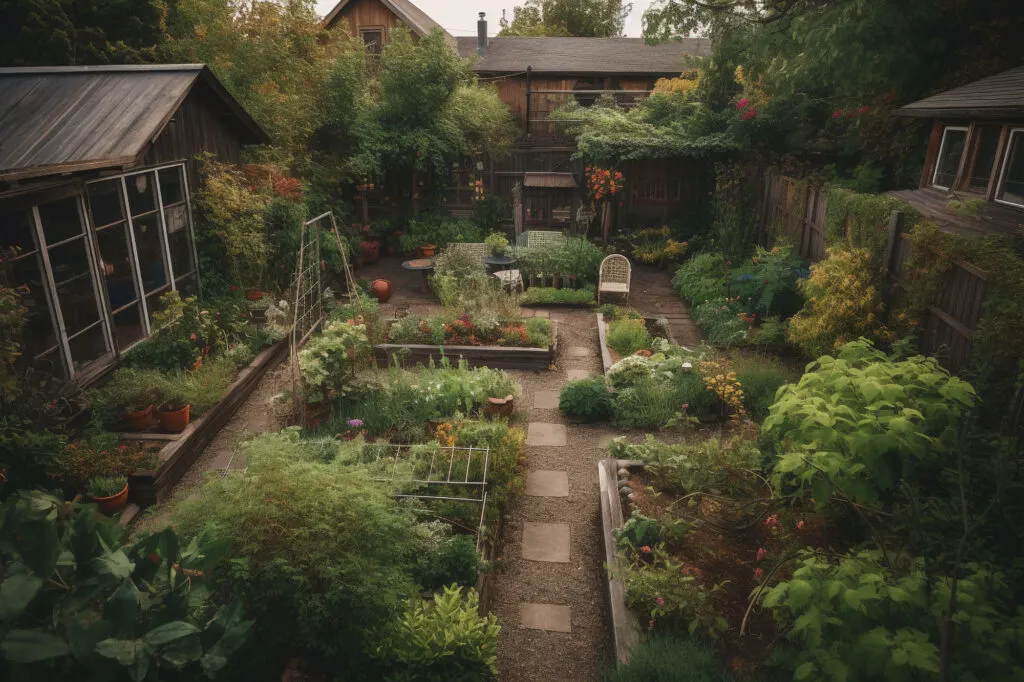
Urban and community gardens can be considered modern victory gardens because they increase access to fresh produce, promote self-sufficiency, and reduce the environmental impact of food production and transportation.
Like traditional victory gardens, these gardens offer other benefits as well, such as improving physical and mental health, enhancing biodiversity, reducing food waste, and fostering social cohesion.
Moreover, they can serve as educational spaces that promote sustainable agriculture practices and support local food systems. Schools have also embraced the idea of community gardens by growing food on school grounds and teaching children about gardening and healthy eating.
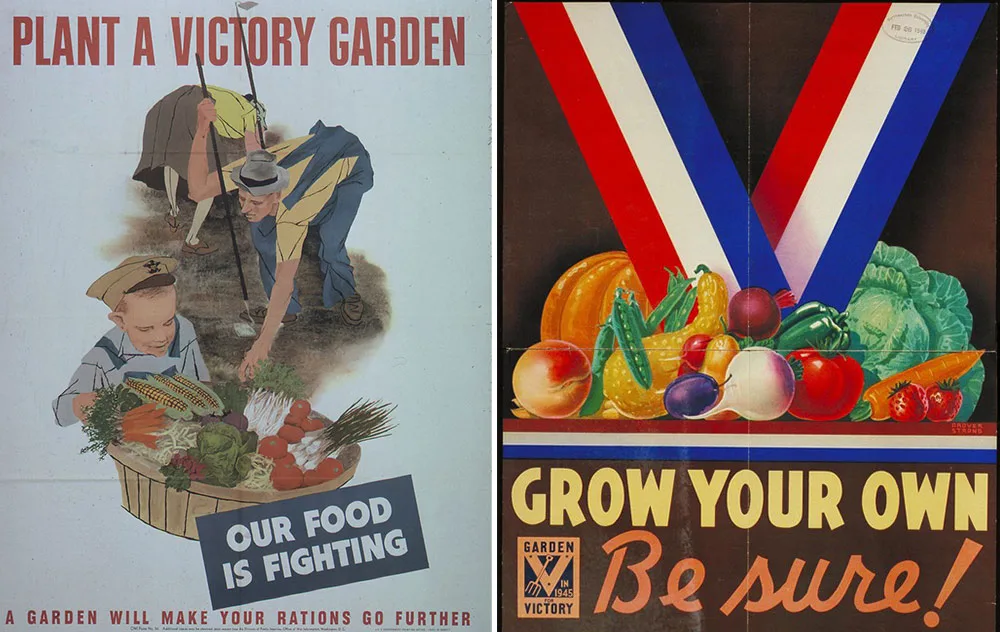
Growing your own Victory Garden
There’s no magic to growing your own produce. Grow what you can, where you can. If you’re a beginner, dip your toe into gardening by growing fast and easy plants like radishes, green onions, and swiss chard.
Start by buying some seeds or procuring some extras from gardener friends. Most seed companies have catalogs you can order or view online and choose your plants and seeds without leaving your couch. If you’d prefer to browse through seed packets in person, many stores in your area likely carry a variety for home gardens in your growing zone.
Even if you can’t grow enough food to feed your family year-round, every little bit helps. If you have plenty of space, you may be able to grow a lot more food than you need, and in that case, you can share fresh vegetables with family, friends, and neighbors.
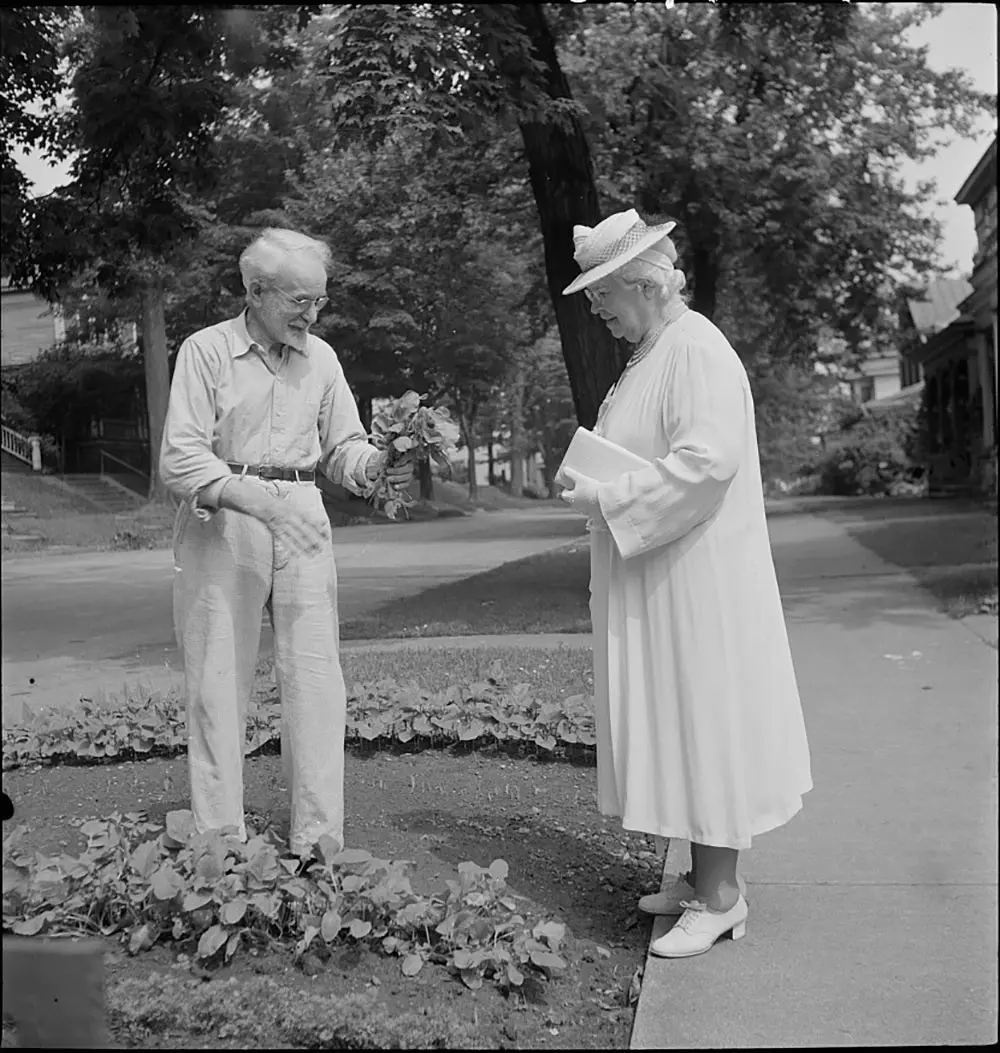
Don’t have a yard? Try growing herbs on your windowsills or baby greens in window boxes. A few pots on a patio can provide you a surprisingly vast selection of herbs, leafy greens, and even fruits. Even growing sprouts in jars on your kitchen counter will yield a quick, healthy harvest of mini greens.
Indoor gardening is also great for those with a short growing season since it’s pretty easy to keep sprout jars and windowsill gardens producing through winter months.
If you really want to take the old Victory Garden concept to the max, turn your yard into a farm! If your city allows it, that is. Below are some interesting images from a 1943 gardening pamphlet, ABC of Victory Gardening, showing how to turn a yard into a farm capable of feeding a family.
This idea is basically subsistence farming, or growing enough to feed the grower and their family for the year. While farming an entire backyard may not be practical for everyone, if you can do it, why not?
A garden plot for 2 to 4 people…
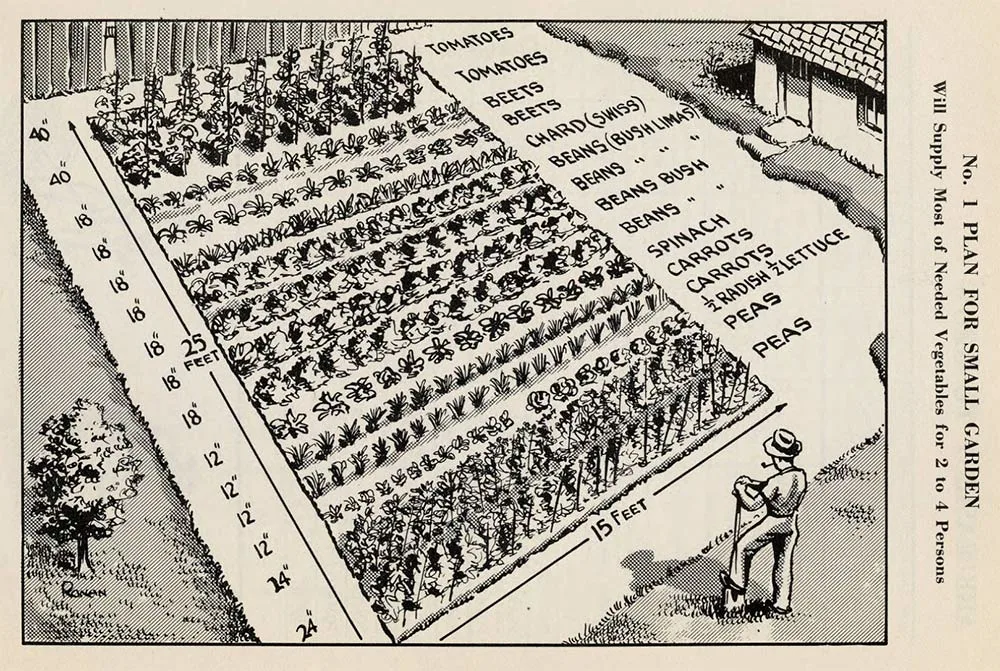
And one for 4 to 7 people…
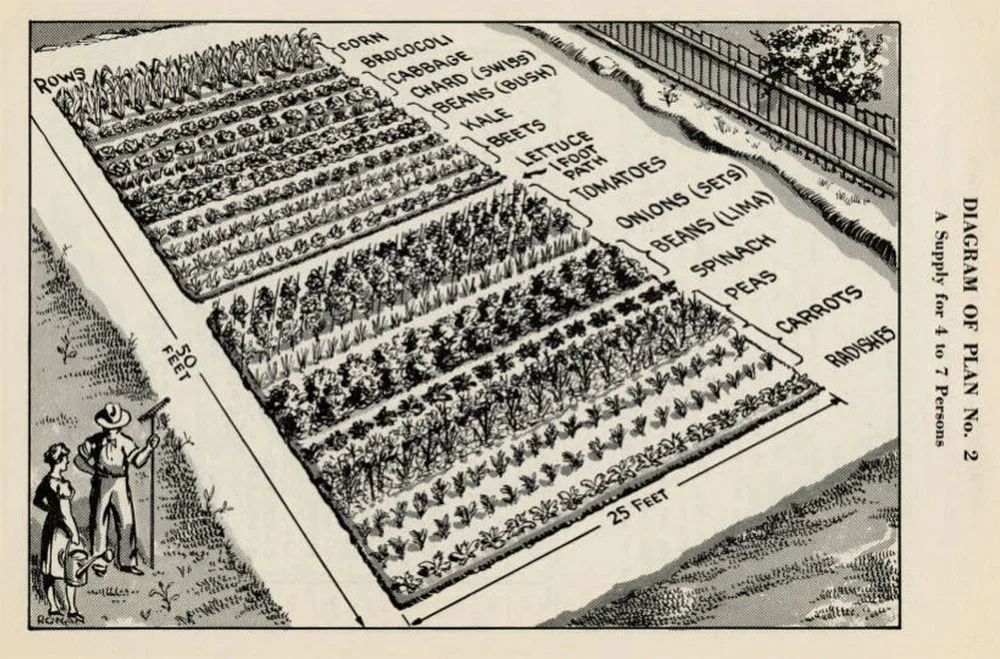
What does Victory Gardening mean to you?
To me, a Victory Garden means more than providing fresh fruits and vegetables for my family when the food supply is unreliable. It means healthy, organic food that I raised from seeds. It means knowing exactly where my food comes from. It means having more than enough to give away to family and neighbors.
While we may grow food for different reasons now than our grandparents did, I think we can all benefit from this way of thinking.
What does Victory Gardening mean to you?
Sources:
Wikipedia – Victory Gardens
The Classroom Victory Garden
Northwestern Libraries World War II posters collection
Ohio History Connection
Archive.org
